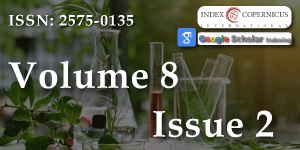Wealth in Water: A Blueprint for Sustainable Global Ocean Research
Main Article Content
Abstract
Pushing forward with leveraging water resources, promoting international cooperation, and ensuring transparency in deep-sea mining operations. There is also a concern about where to discharge the toxins of unpurified water. Artificial Intelligence has created a dominance in the applications field with a totally automated system.
Out of a thorough analysis completed with indicators, satellite radar, and A Journals, there are 30 years of research and 8 years of monitored testing to achieve accuracy and relevance. The patents in place are, Oceanic Mining System (4446636), Flexible Solar Skin in Combination with an Airplane (4768738), Cargo Torpedo (4421050), Oceanic seaplow system (4398362), and previous articles like “Is Extracting Lithium and deep-sea mining more sustainable?”, “AI as a Means of Water Purification Protection”, “Global Water Distribution”, and “Can Deep Sea Water be Processed into Potable Water and Distributed into the Middle East’?
To report some ballpark numbers on the proposal and how we would navigate these projects, there will be an exact location of where the plant will be built as well as a water/salinity report of the water being treated. There are still issues with analyzing the cost of desalination compared to other alternatives. Deep Sea Water proves to be a higher quality water and the investment is well worth it. The surveys lean toward clients preferring the International Standards Operating Procedure. All recipients agree there should be a sense of urgency on water shortages. Currently, AI has proven to be a vital asset in eliminating biases and expenses.
Article Details
Copyright (c) 2024 Weinert DR

This work is licensed under a Creative Commons Attribution 4.0 International License.
Ferlier L. Science in the Making. London: The Royal Society; 2018. https://royalsociety.org
Dellsén F. Scientific progress: By-whom or for-whom? Stud Hist Philos Sci. 2023 Feb;97:20-28. doi: 10.1016/j.shpsa.2022.11.006. Epub 2022 Dec 8. PMID: 36495836.
Hellmeier S, Bernhard M. Regime Transformation from Below; Mobilization for Democracy and Autocracy from 1900 to 2021. Sagepub. 2023; 56. sagepub.com
Li Y, et al. Transformers as Algorithms: Generalization and Stability in In-context Learning. 2023; 1. ucr.edu
Babina T. Assessing the Impact of International Sanctions on Russian Oil Exports. 2023; 31. papers.ssrn.com
Abdullah H. Building the Blue Ocean Strategy through the Techniques of Marketing Intelligence and Exploratory Study in Iraq. Private Banks. 2023. https://www.scholarexpress.net
Liu C. A new risk probability calculation method for urban ecological risk assessment. 2020; 15: 024016. DOI:10.1088/1748-9326/ab6667
Popper K. The logic of scientific discovery. London & New York. 2004. ISBN 0-415-27843-0
Zamanzadeh V, Jasemi M, Valizadeh L, Keogh B, Taleghani F. Effective factors in providing holistic care: a qualitative study. Indian J Palliat Care. 2015 May-Aug;21(2):214-24. doi: 10.4103/0973-1075.156506. PMID: 26009677; PMCID: PMC4441185.
Wu ZYi. High Fidelity Digital Twin-Based Anomaly Detection and Localization for Smart Water Grid Operation Management. 2023; 91: 104446. sciencedirect.com
Derakhshani R. Machine Learning-Based Assessment of Watershed Morphometry in Makran. 2023; 12: 776. https://doi.org/10.3390/land12040776
U.S. Department of the Interior. Bipartisan Infrastructure Law Supports $580 Million Investment to Fulfill Indian Water Rights Settlements. 2023; 1. doi.gov
Parliament of Western Australia. Parliamentary Questions. 2023. Parliament.wa.gov.au
Perth Seawater Desalination. Perth Seawater Desalination Plant. 2023. water-technology.net
Texas Water Development Board. General FAQs. twdb.texas.gov
Vega AL. Economies of Ocean Thermal Energy Concession (OTEC); an update. Offshore Technology Conference. 2012. OTC 21016-MS, 2010
Goto T. Overview of Desalination in the Pacific Region. https://ida.memberclicks.net/assets/docs/1092.1.pdf
IDE. IDE Your Water Projects. 2023. ide-tech.com
Janowitz D. Can Large-Scale Offshore Membrane Desalination Cost-Effective and Ecologically Address Water Scarcity in the Middle East? 2022; 12: 323.

